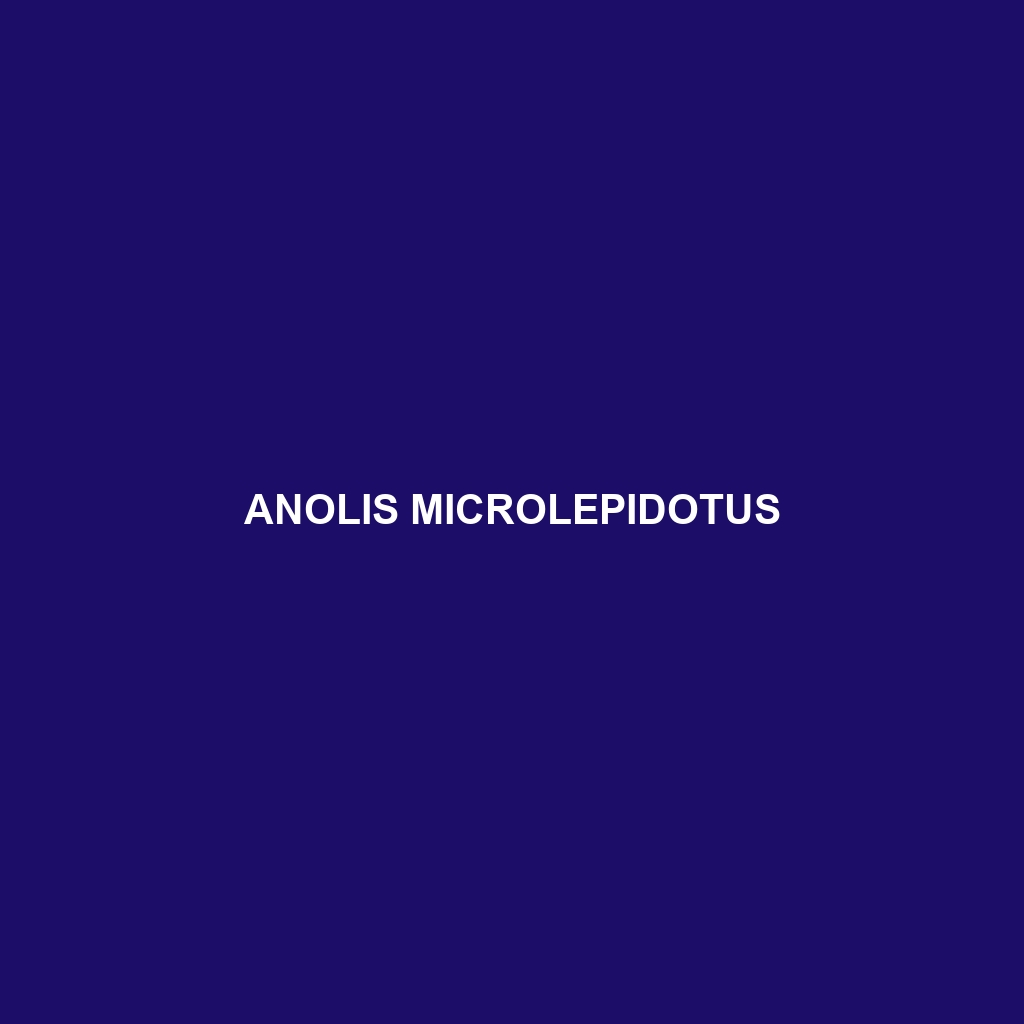Common Name: Anolis microlepidotus
Scientific Name: Anolis microlepidotus
Habitat:
Anolis microlepidotus is primarily found in the lush, tropical forests of Central America, particularly in countries such as Panama and Costa Rica. This species thrives in humid environments, often residing in lowland areas near streams and rivers. It prefers the dense understory and vegetation cover that these habitats provide, making it adept at navigating through leaves and branches.
Physical Characteristics:
This species of anole is known for its small to medium size, typically ranging from 5 to 7 cm in body length. Anolis microlepidotus exhibits a distinctive greenish or brownish coloration, which aids in camouflage among foliage. Its slender body, elongated limbs, and prehensile tail are notable features that assist in climbing. The scales of Anolis microlepidotus are unique, giving it a rough texture that contributes to its ability to grip surfaces effectively.
Behavior:
Anolis microlepidotus is primarily arboreal, demonstrating behaviors such as territorial display and basking in sunlight during the day. Males showcase vibrant throat colors when courting females or defending their territory, driving interactions with potential rivals. The species is also known for its agile movement and quick responses to threats, making it an interesting subject for behavior studies in reptilian ecology.
Diet:
This anole primarily feeds on small insects and other invertebrates, with a diet consisting of ants, crickets, and flies. Anolis microlepidotus is an active forager, utilizing its keen eyesight to spot prey from a distance. The species plays a vital role in controlling insect populations within its habitat, contributing to the ecological balance.
Reproduction:
Reproductive habits of Anolis microlepidotus typically involve a breeding season that coincides with the rainy season, ensuring optimal conditions for offspring survival. Females lay one to two eggs per clutch, often in concealed locations to protect them from predators. Once hatched, the young anoles are independent and exhibit adult-like habits shortly after, making them fascinating subjects for studies on early reptilian life stages.
Conservation Status:
The current conservation status of Anolis microlepidotus is categorized as ‘Vulnerable’ due to habitat loss and environmental changes in its native regions. Efforts are underway to protect these habitats, as they are critical for the survival of this unique species.
Interesting Facts:
One interesting fact about Anolis microlepidotus is that it exhibits a form of sexual dimorphism, where males can be identified by their larger size and vibrant coloration compared to females. Additionally, this species has shown remarkable adaptability to varying environmental conditions, making it a resilient inhabitant of its ecological niche.
Role in Ecosystem:
Anolis microlepidotus plays a crucial role in its ecosystem as both a predator and prey. By controlling insect populations, it helps maintain the balance of its habitat, while also serving as a food source for birds and larger reptiles. The complex relationships it shares with other species highlight its importance within the tropical forest ecosystem.
